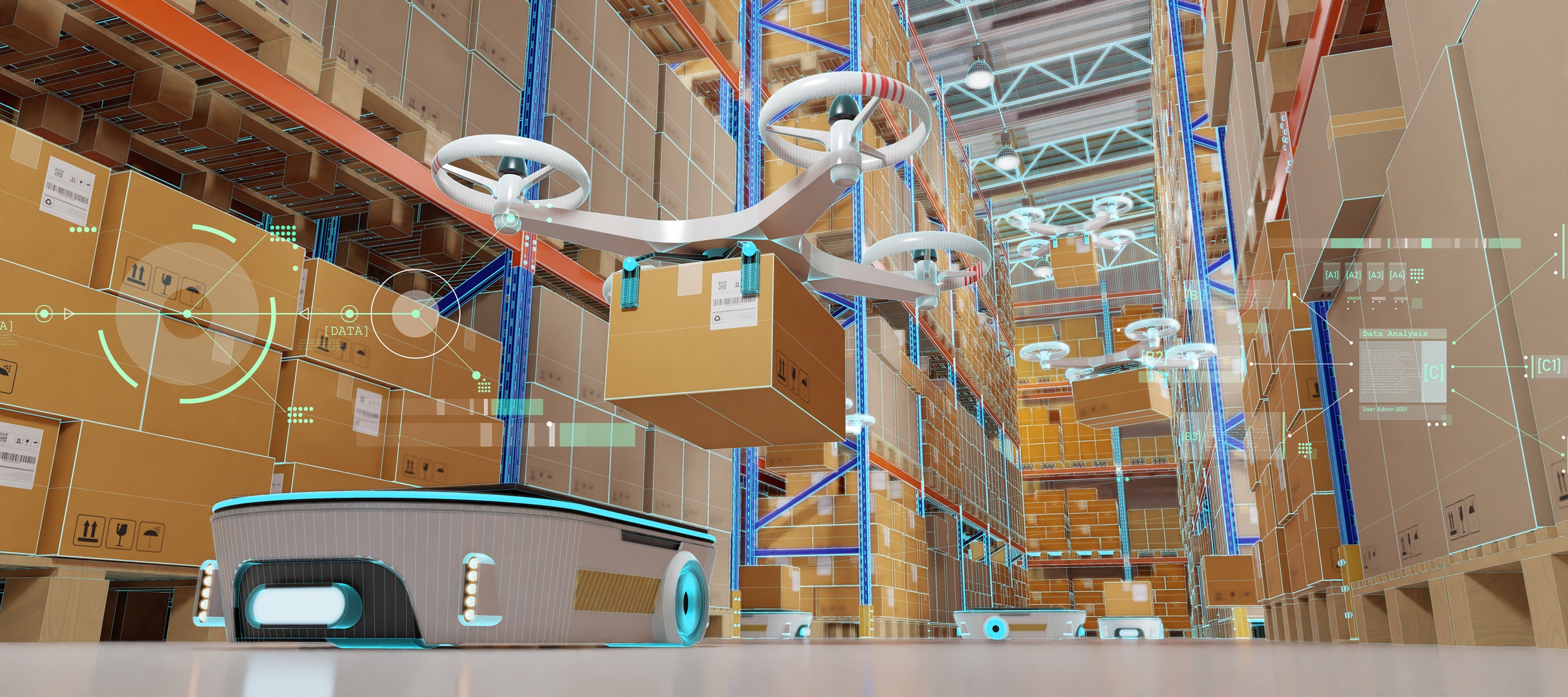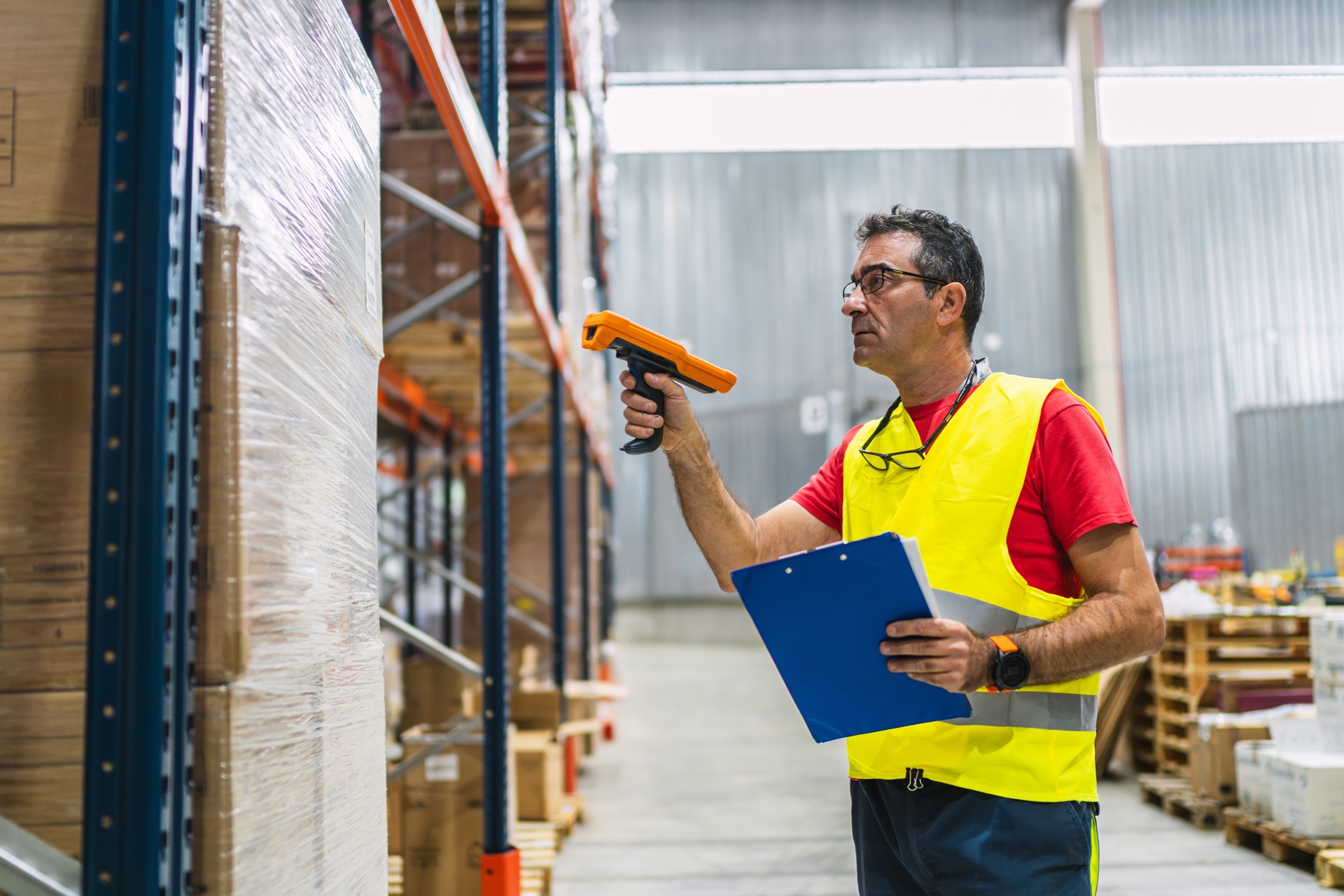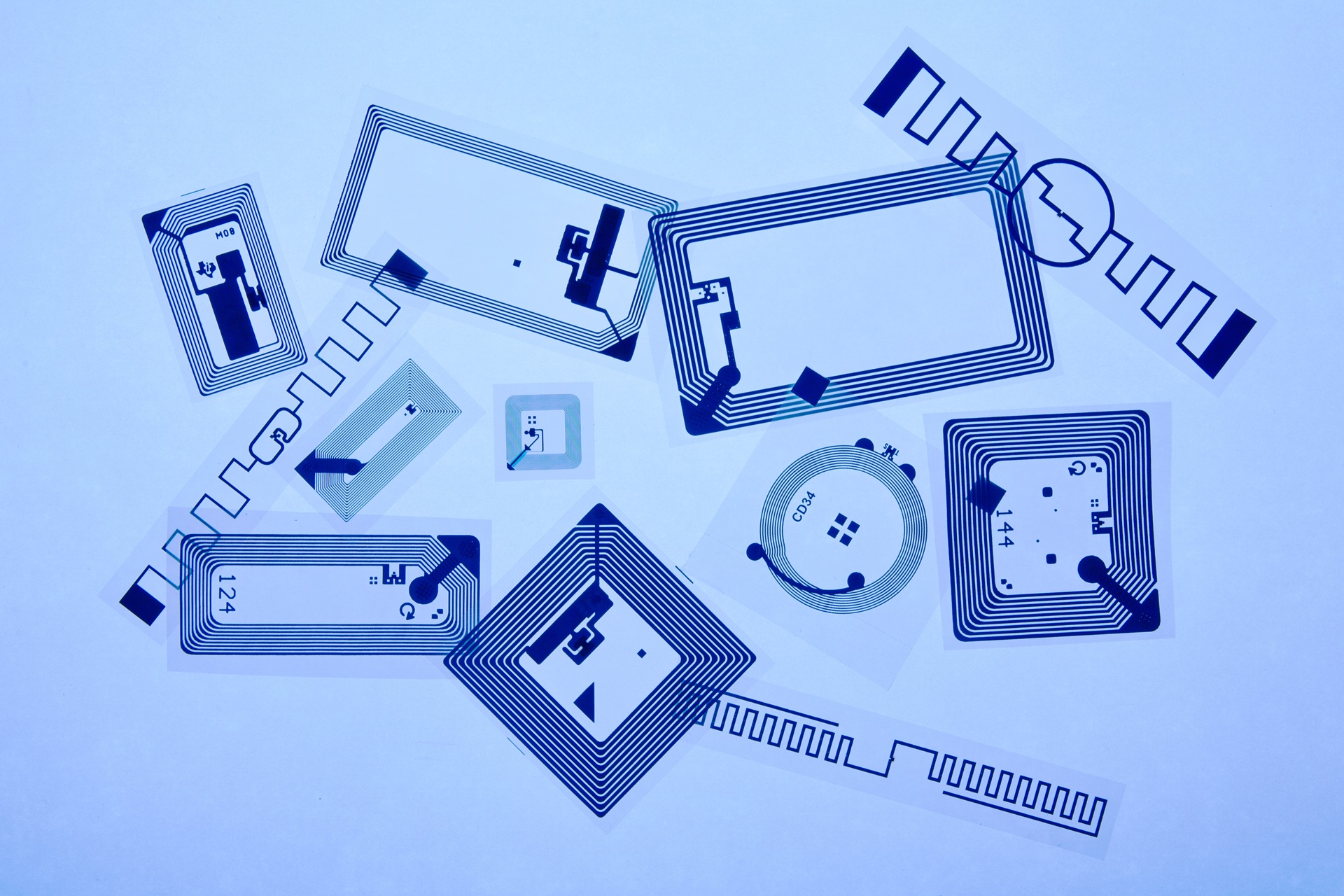A fast-moving frontier
In just two decades, RFID labelling has progressed from niche logistics tech to a core enabler of traceability, inventory control, and brand interaction. But we are still only at the beginning. The next ten years will see an explosion in capability, scale, and use cases – driven by convergence in materials science, data standards, sustainability mandates, and AI.
As packaging becomes a source of data, not just a medium for print, the humble label will evolve into:
- a live data interface;
- a dynamic communications channel;
- an environmental witness;
- a compliance mechanism; and
- increasingly, a node in the Internet of Things (IoT).
Businesses investing today must design for tomorrow – choosing partners, systems, and materials that can evolve with this fast-changing frontier.
This chapter outlines the key trends shaping the future of RFID labelling – from sensor integration to decentralised identity and real-time analytics.
From identification to intelligence
Historically, RFID labels served a single purpose: to identify an object uniquely and automatically. That purpose remains fundamental – but a new era is emerging where labels are not just identifiers, but information processors.
RFID labels as sensor platforms
The next generation of labels incorporates sensor functionality, enabling them to detect:
- temperature excursions (eg cold chain breaches);
- physical tampering or seal breaks;
- moisture exposure or water damage;
- pressure, shock, or vibration during transport; and
- UV or light exposure.
These labels allow packaging to report on its own condition, triggering alerts, recalls, or customer instructions in real time.
Sensor-enabled RFID labels are already in use in sectors such as pharma, fresh food, and chemicals – and are poised to scale rapidly as costs fall.
Context-aware and programmable behaviour
With developments in chip design and logic programming, RFID tags are gaining:
- the ability to behave differently based on reader location or time;
- contextual triggering of specific messages, languages, or workflows; and
- dual-mode communication (eg working with both industrial scanners and consumer phones).
This turns the label into a software-defined experience, not just a static ID.
Example:
A wine bottle label could display harvest info at the vineyard, customs clearance at the border, shelf details in-store, and sustainability credentials at home – all from the same chip.
AI at the edge
As processing power shifts from the cloud to the edge, labels and readers can:
- interpret scan data instantly;
- detect anomalies (eg misrouted items, fake returns); or
- optimise local decisions (eg automatic shelf restocking triggers).
This creates real-time intelligence that improves operations without human intervention.
Conclusion:
Tomorrow’s smart labels will not just say ‘I am this item’ – they will say ‘I know where I’ve been, how I’ve been treated, and what you should do with me next’.
Printed electronics
One of the major frontiers in RFID labelling is the shift away from etched metal and plastic substrates toward sustainable, printed electronics. The goal: make RFID UHF and NFC tags more affordable, flexible, and environmentally compatible – without sacrificing functionality.
Conductive inks
Advances in conductive silver and graphene inks are allowing antenna structures to be printed directly onto paper, biofilm, or other flexible substrates.
The aim of which is to:
- eliminate the need for aluminium etching;
- reduce water and chemical usage;
- enable thinner, compostable constructions; and
- lower energy input per tag.
Printed antennas are particularly attractive for short-read applications like NFC-enabled packaging, loyalty items, or disposable sensors.
Interoperable digital identity frameworks
As products become connected, there is a growing need for a universal language of identity. RFID labels must not only store data – they must speak a standardised, machine-readable format that works across platforms, borders, and supply chains.
This is driving a shift toward interoperable digital identity frameworks.
GS1 Digital Link
The GS1 Digital Link standard replaces barcodes and static EPCs with a web-based URL format. It allows a single identifier to:
- work across RFID, NFC, QR, and datamatrix;
- link to product content, traceability data, and lifecycle records; or
- change dynamically based on context (eg before versus after purchase).
It is backward-compatible with existing GS1 standards (GTIN, GLN etc.) and supported by major retailers, logistics firms, and regulators.
EPCIS and event-level traceability
The Electronic Product Code Information Services (EPCIS) framework enables sharing of:
- ‘what happened, where, when and why’ events;
- in a secure, interoperable XML or JSON structure; and
- with granular, permissioned access for regulators, partners, and customers.
EPCIS 2.0 includes native support for IoT and digital twins – and is likely to underpin EU Digital Product Passport (DPP) infrastructure.
ISO/IEC 20248 and digital signatures
For high-value and regulated goods, data integrity matters. ISO/IEC 20248 allows:
- digital signatures embedded in RFID tags;
- cryptographic verification that data has not been tampered with; and
- offline validation using standard readers or smartphones.
This supports trusted labelling in sectors like pharma, defence, luxury, and food safety.
RFID labels as keys to decentralised identity
In future architectures, labels will not merely contain data – they will act as keys or pointers to decentralised product records stored on:
- cloud platforms;
- blockchain networks; or
- private databases with public metadata.
This approach allows real-time control over what a tag ‘reveals’ – while ensuring provenance and traceability.
Conclusion:
Standards are converging toward a future where every label acts as a universal passport – speaking the same language, linking to dynamic data, and working across industries without friction.
Embedded smart packaging and smart surfaces
RFID labels are no longer limited to pressure-sensitive labels. The next wave of development involves embedding intelligence directly into the structure of packaging – or even into the materials themselves.
This enables both improved performance and more elegant integration into form factors, especially where labels might otherwise be removed, damaged, or aesthetically intrusive.
Integrated smart closures and seals
In sectors such as pharmaceuticals, spirits, and cosmetics, RFID components are being built into:
- caps and lids;
- tamper-evident shrink bands; and
- induction seals or foil liners.
This approach:
- prevents tag removal without damaging the product;
- ensures authentication at the moment of opening; and
- simplifies production by removing label alignment steps.
Thermoform and blister pack integration
For medical and industrial use cases, RFID antennas can be embedded in:
- thermoformed trays;
- blister pack backings; or
- clamshell packaging.
These constructions support item-level tracking, dosage compliance, and returns verification – without requiring adhesive labels.
Smart surfaces and conductive films
Beyond discrete tags, the future includes functional packaging materials, where:
- the surface itself carries signal or data;
- sensors and antennas are woven or printed into fabric, foil, or film; and
- the pack acts as both identifier and interface.
Applications include automotive parts, aerospace components, luxury goods, and wearables – where the package is part of the product.
Conclusion:
Embedded smart packaging reduces complexity, enhances protection, and opens up a new design language – one where intelligence is invisible but integral.
Tap-based marketing and dynamic content
RFID labels – especially NFC labels – are becoming powerful tools for direct-to-consumer (DTC) marketing. They allow brands to create interactive, contextual, and measurable experiences, activated by a simple smartphone tap.
This capability is transforming product packaging into a digital touchpoint – a bridge between physical goods and personalised digital journeys.
Personalisation and dynamic content
With dynamic link management platforms, NFC taps can deliver:
- geo-personalised content (eg language or promotion changes by country);
- A/B-tested landing pages;
- user-specific offers or loyalty bonuses;
- real-time stock or shelf data; or
- tap-based reordering and subscription integration.
Each tap becomes a moment of engagement – not just a static redirect.
Marketing automation via physical interaction
NFC taps can be integrated with:
- CRM and Customer Data Platforms (CDPs);
- marketing automation tools (eg HubSpot, Salesforce, Klaviyo); or
- analytics and attribution systems.
This enables:
- segmentation based on scan behaviour;
- triggered campaigns from product interaction; and
- retargeting or upselling through connected profiles.
The product becomes a trigger, not just an object.
Use cases in action
Examples include:
- a cosmetics jar unlocking how-to videos tailored to skin type;
- a wine label linking to winemaker interviews and pairing suggestions;
- a medication pack confirming usage with digital health records;
- a refillable pack directing to nearest refill station with loyalty credits.
All of this is made possible without an app – just a smartphone and a tap.
You can find more use cases in a dedicated article here.
Consumer trust and opt-in
To succeed, these experiences must be:
- transparent about data use;
- value-driven, not intrusive; and
- fast, mobile-optimised, and brand-consistent.
Done well, tap-based marketing turns a commodity package into a channel for loyalty, education, and revenue.
Machine-readable sustainability and DPP readiness
As environmental disclosure and product traceability become regulated obligations, RFID labels will play a central role in enabling machine-readable sustainability data – not just marketing claims or compliance checklists.
This is particularly urgent in the context of the European Union’s emerging Digital Product Passport (DPP) legislation, part of the EU Green Deal and Circular Economy Action Plan.
From static labels to dynamic disclosures
Traditional eco-labels (eg recyclability icons or carbon symbols) are limited by:
- space on-pack;
- lack of verifiability; or
- one-size-fits-all claims.
RFID labels enable:
- unique, item-level data links;
- dynamic access to real-time lifecycle assessments (LCA);
- batch-specific or SKU-specific sourcing, emissions, and material profiles; or
- geo-adapted end-of-life instructions (eg local recycling rules).
Digital Product Passport (DPP) integration
The EU’s DPP initiative will require many product categories (starting with batteries, electronics, textiles) to carry:
- a machine-readable unique identifier;
- access to a cloud-based record containing material composition, recyclability, repair instructions, emissions data, and ownership history.
RFID labels – especially GS1 Digital Link–enabled NFC and RFID tags – are likely to be the default carriers for this identity.
Key DPP requirements include:
- open interoperability (eg EPCIS, ISO);
- access rights management (who sees what, when); and
- secure data integrity and signature schemes.
RFID labelling partners must already be preparing for this shift.
Eco-metadata and recyclability triggers
Beyond passports, RFID labels can:
- indicate compatibility with material recycling facilities (MRFs);
- instruct automated sorters (eg optical, robotic systems);
- signal hazardous or regulated materials (eg PFAS, battery types); or
- activate green content in consumer apps (eg gamified recycling schemes).
This aligns with growing use of machine vision and AI in waste handling – where physical identifiers must be digitised and standardised.
Conclusion:
RFID labels will soon carry not just marketing value, but regulated environmental disclosures. Forward-thinking brands are acting now to build DPP-ready labelling and metadata strategies.
AI and analytics in RFID ecosystems
As RFID becomes more widely adopted, it creates an expanding ocean of scan data – offering powerful insights into product movement, interaction, exception, and risk. The challenge is no longer just capturing data – it is interpreting it effectively.
This is where artificial intelligence (AI) and machine learning (ML) will reshape smart labelling ecosystems.
Real-time predictive analytics
With millions of reads per hour across warehouses, stores, and factories, AI models can:
- detect anomalies in stock flow or dwell time;
- predict shelfouts before they happen;
- identify process bottlenecks or skipped scans; or
- enable exception-based management and alerts.
Example: A sudden drop in read rates for a given product in one store triggers a maintenance check on antennas – before inventory data degrades.
Supply chain optimisation
AI-driven RFID data helps:
- optimise replenishment cycles;
- compare supplier or facility performance;
- simulate inventory strategies; and
- dynamically allocate goods based on real-time demand.
In retail, this supports autonomous fulfilment and micro-adjustments to planograms, promotions, or markdowns.
Consumer intelligence from NFC taps
NFC scan data, when responsibly anonymised and aggregated, enables:
- segmentation based on behaviour and location;
- effectiveness measurement of on-pack campaigns;
- lifecycle analysis of repurchase or refill habits; and
- prediction of churn or loyalty from engagement depth.
This data can feed directly into CRM, CDP, and DMP systems to fine-tune targeting and product design.
AI at the edge
With more computational power moving to readers and handhelds, edge AI enables:
- local event recognition (eg damaged item, missing read);
- latency-free reactions (eg gate closure, product diversion); and
- autonomous filtering and summarisation of read events.
This reduces cloud dependency and enables faster, cheaper insight.
Conclusion:
RFID creates value not through volume of data, but through the intelligence extracted from it. AI is the engine that turns smart labelling into smart operations.
Prepare now for what’s coming
The future of RFID labelling is not just about better tags. It is about a connected physical world, where products:
- carry data from cradle to grave;
- sense and respond to their environment;
- communicate with systems and users in real time; and
- support compliance, circularity, and customer experience – simultaneously.
Key trends include:
- the integration of sensors, software, and AI into packaging;
- the shift to sustainable and printed electronics;
- adoption of interoperable digital identity standards; and
- labels acting as gateways to personalisation, automation, and compliance.
For brands, manufacturers, and supply chain partners, the message is clear:
Invest now in infrastructure, partners, and standards that will evolve with this ecosystem.
Your decisions today – about label structure, data formats, encoding rules, and supplier relationships – will define your readiness for:
- the Digital Product Passport;
- AI-driven operations;
- carbon footprint transparency; and
- global traceability expectations.
The smartest labels of tomorrow will not just tell you what a product is. They will tell you where it has been, how it was made, what it contains, who owns it – and what to do with it next.







